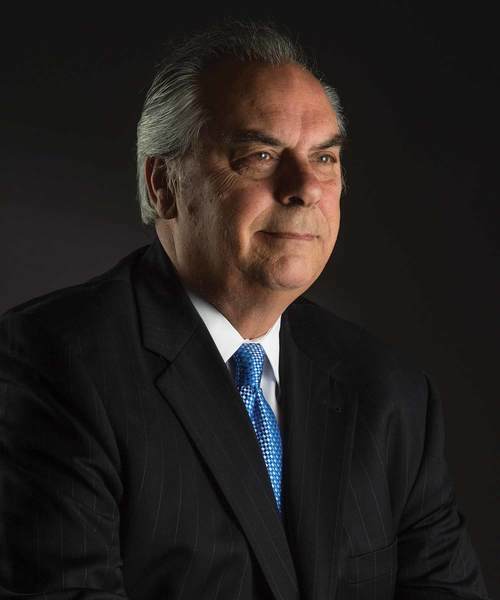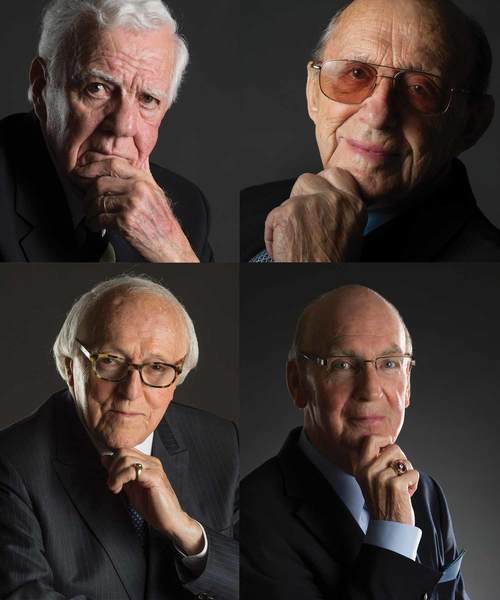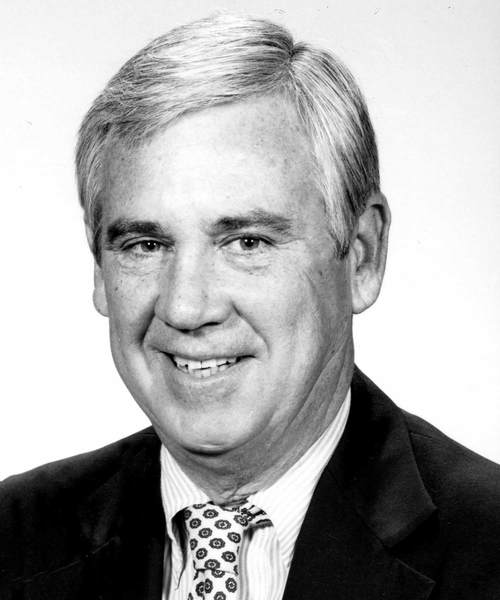
Mike Danch
He was always there
A standing joke between Mike and Conie Danch is that there always have been two women in Mike’s life.
One is Conie his wife, of course. The other is Joyce, and Mike has been with her since 1972, several years before he even met Conie.
That’s the year that he went to work at Notre Dame, his alma mater, as the events manager at—you guessed it—the Joyce Athletic and Convocation Center.
“Kind of a bad joke,” Mike admits.
But it was a good relationship. As Mike climbed through the ranks at Notre Dame—eventually becoming associate athletic director of athletic facilities before retiring at the end of August—the Joyce Center has always been a part of his job … and his journey.
He served on the planning and facility oversight committee for six U.S. presidential visits to the Joyce while also overseeing dozens of big-time concerts featuring such performers as Elvis, Sinatra, Springsteen, the Jackson 5 and Lawrence Welk … the Harlem Globetrotters … Ringling Bros. Circus … the Ice Capades … and just about anything else that would fit in the doors.
“What was great about my job was that no two days were alike,” Mike says.
And he has seen a little bit of everything.
“Before their last Mass as president and executive vice president, I watched Father (Theodore M.) Hesburgh and Father (Edmund P.) Joyce practice riding motor bikes behind the Joyce so they could later ride down the South Quad in front of the students,” he says.
A few years ago, Mike also oversaw the burial of Father Hesburgh and coordinated the events at the Joyce Center that followed. A humbling responsibility.
It seemed that Mike always was destined to be part of Notre Dame.
“I had an uncle who was recruited by (former football coach Knute) Rockne, another uncle who was an usher at the stadium for 50 years and three aunts who were Holy Cross nuns,” he says.
His father, Elmer Danch, a one-time newspaperman and community activist, was always around the Notre Dame scene and was friends with Notre Dame legend and longtime athletic director Edward “Moose” Krause.
“I heard his name so much when I was growing up that I actually thought that a moose was the Notre Dame mascot,” Mike says with a smile.
When he finally met Moose, he was in awe of this gentle hulk of a man. That feeling continued as Mike and Moose later worked in tandem to ensure that Irish sporting events went smoothly.
“When I was general manager of the Joyce, Moose would say to my dad, ‘I remember when he was a 5-year-old kid and now I’m working for him’—which really wasn’t true. He just said that to make my dad feel a little prouder.”
More than the facilities and games, it was the people—like Moose and Father Hesburgh—who made Mike’s 44-year career at Notre Dame so special.
“The faculty and staff have always been unselfish with their time and ideas,” he says. “You can accomplish an awful lot at a place where so many hands pitch in and nobody feels the need to take credit.”
Mike’s first job at Notre Dame—one he gladly did for free as a teenager—was serving as a spotter for his father, who typed the play-by-play accounts of football games in the Notre Dame Stadium press box for 35 years.
In 1995, that same stadium became Mike’s responsibility. And in 2000, he also became the game manager—in charge of all aspects of the game-day experience at the stadium. He would meet with the ushers, the NBC Sports crew, the referees, representatives of the visiting team and security personnel while making sure such events as on-field tributes, halftime shows and even flyovers went off without a hitch.
“I enjoyed being in the middle of stuff and I guess I kept expanding my job description,” Mike says. “It was a lot of fun.”
There were serious times, too.
“On the day of 9-11, Father (Edward) Malloy wanted to have a memorial Mass on the South Quad at 3 o’clock that afternoon,” Mike recalls. “I worked with several people on campus to pull it off and we had about 10,000 people show up.”
Then there was the time Mike had to accommodate a Russian KGB agent on the dais while President Ronald Reagan gave the commencement speech in 1981—just months after he was wounded during an assassination attempt. Yes, you read that right.
Let Mike explain: “Kurt Waldheim, then the Secretary-General of the United Nations, was receiving an honorary degree and U.N. security rotated among the member countries. It just so happened that it was Russia’s turn. So there was the KGB and the Secret Service watching over things together.”
Mike rolled out the Joyce Center’s red carpet for Reagan once again in 1987, but this time he came back more as the Gipper than the president. Reagan, who played Notre Dame legend George Gipp in the 1940 movie “Knute Rockne All American” spoke at the first-day celebration of a postage stamp honoring Rockne, Gipp’s coach.
“The president pulled out a football during his speech and threw it into the audience,” Mike recalls. “And who caught it? None other than (Heisman Trophy winner) Tim Brown.”
No, Mike didn’t orchestrate that Gipper-to-Brown reception, but during his own Notre Dame career he quarterbacked many winning pre- and postgame activities.
In 2009, Mike also became what could only be labeled as show producer—setting up pep rallies and video presentations all over the country, including at such places as Times Square and Lincoln Center in New York, the National Mall in Washington D.C., Symphony Hall in Boston and the Alamo in San Antonio as part of the Shamrock Series.
The Shamrock Series is a Notre Dame home game played at a neutral site each year so fans in other parts of the country can experience what the atmosphere is like in South Bend on football game weekends. Played first in San Antonio, the series has also traveled to New York, Washington D.C., Chicago, Dallas, Indianapolis and Boston. Game sites have been at such iconic places as Yankee Stadium and Fenway Park.
“These games and weekends highlight Notre Dame athletics’ five pillars of core values—excellence, education, faith, community and tradition,” Mike says. “It’s taking the spirit of Notre Dame on the road—I think it has worked out great.”
Other special moments for Mike include the production of an entertainment event in the O2 Arena before the Notre Dame-Navy football game in Dublin, Ireland, in 2012 and organizing a pep rally on Miami Beach that drew more than 40,000 Irish fans on the weekend leading up to the national championship game against Alabama in 2013.
But maybe his most satisfying accomplishment was helping to bring the 1987 International Special Olympics to Notre Dame and the South Bend area. Before a bid was considered, he was part of several meetings on the subject, which spawned several questions about whether the University and community could pull off an event of that scope.
“And so (athletic director ) Gene Corrigan and I went to see Father Hesburgh for his input,” Mike recalls. “He didn’t see any problem (hosting) and gave us his blessing. In five minutes, we accomplished more with him than in all those meetings. As we walked down the Administration Building’s steps, I told Gene that we should have just started there.”
In 2011, Mike was named an honorary member of the 1966 national championship team for all he had done for them. That memorable season was during his senior year at Notre Dame, which made the honor even more special. Four of the players on that team also had gone through South Bend St. Joseph High School with Mike and 17 other Notre Dame-bound classmates.
He joined members of that team during their 50th anniversary celebration of that undefeated season during the Notre Dame-Michigan State game weekend in 2016. But he decided when he retired earlier in the year that he would watch all of the 2016 season’s games at his home with family.
“I don’t want to give the appearance of looking over people’s shoulders,” Mike says. “I think I trained those people now in charge pretty well.”
It remains to be seen, though, how long he can stay away from Joyce.

